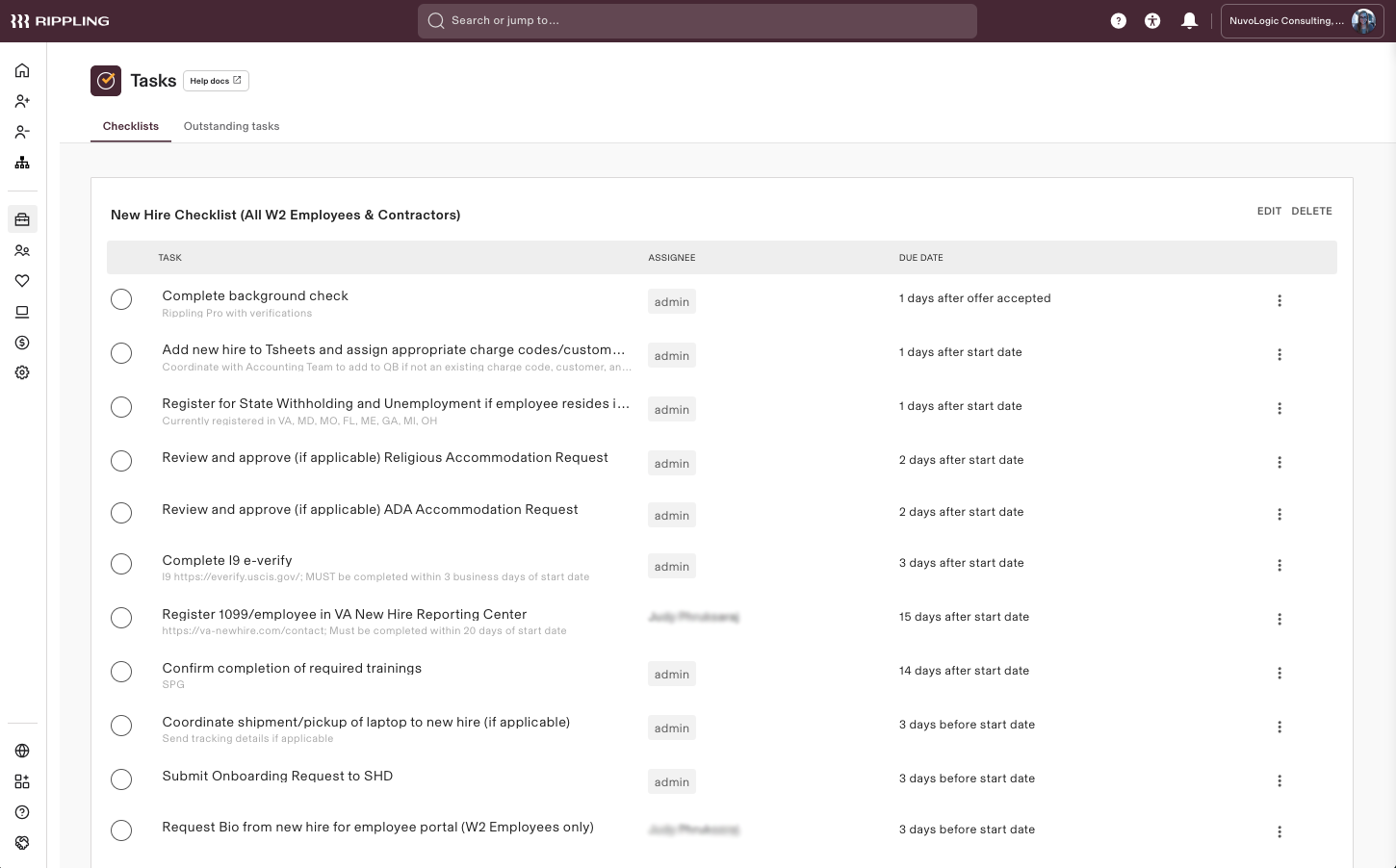How we ace onboarding with new hire checklists

Amanda Perry is the People and Operations Manager at NuvoLogic Consulting. Amanda is a Rippling Wavemaker, a leader who challenges the status quo and finds creative ways to solve problems and drive business impact.
At NuvoLogic, one of my top priorities is to make sure new employees and contractors feel welcome ahead of their first day. As a small government consulting firm, we only hire when the need arises. Often it’s 2 to 5 times a year, which means it’s all the more critical to nail onboarding every time we add to our team.
Because onboarding is infrequent compared to larger firms I’ve been with, it’s easy to forget some of its finer details. Here’s how we revamped our process to effortlessly keep ourselves on track.
The problem: Forgetting onboarding tasks
It’s tricky to remember every little onboarding task when you don’t hire new team members often. And our to-do lists vary depending on the type of new hire—1099, W2, or subcontractor entity. We rely on a lot of government contractors, who require extra onboarding steps to ensure compliance with various regulations. We also need to register full-time employees across different states for taxes and unemployment insurance, since we employ people across different jurisdictions.
Tracking all these granular details manually almost always posed a risk that we’d miss a crucial step or two. We wanted a more organized system that didn’t jam us up with administrative hassles ahead of a new hire’s first day.
The solution: New hire task lists
With Rippling, I created a new hire checklist that gives me easy-to-access reminders of every task we need to complete to onboard new employees and contractors.

This task list includes:
- Contingencies: The list helps us track whether new hires passed background checks, registered for training courses, and completed I-9 verifications.
- Account set ups: I can quickly add new hires into third-party accounting and IT systems, so they can later submit invoices and configure work devices.
- Document retrieval: The task list keeps us on top of documents like offer letters and tax forms.
The beauty of this feature: I don’t have to worry about setting it up for every new employee or contractor. Rippling automatically generates this checklist whenever I add a new hire into the system.
The impact
Onboarding task lists make us more organized and efficient.
No stone unturned
Even though we don’t hire often, it’s now much easier to stay on top of onboarding tasks whenever we do. We can also effortlessly track progress and stick to deadlines to make sure we’re compliant—since each checklist item has a corresponding “due date” in the right-hand column.
In sync with the CEO
The checklist lets us set different “assignees” for each onboarding task, which makes it significantly easier for our CEO to handle some of the steps she owns—like announcing new hires to staff and reporting them to state authorities—herself.
Personalized onboarding
The task list makes it easy to distinguish between onboarding requirements for employees and contractors. We can also tailor our onboarding experience to the unique needs of each new hire.
This blog is based on information available to Rippling as of February 7, 2025.
Disclaimer: Rippling and its affiliates do not provide tax, accounting, or legal advice. This material has been prepared for informational purposes only, and is not intended to provide or be relied on for tax, accounting, or legal advice. You should consult your own tax, accounting, and legal advisors before engaging in any related activities or transactions.








